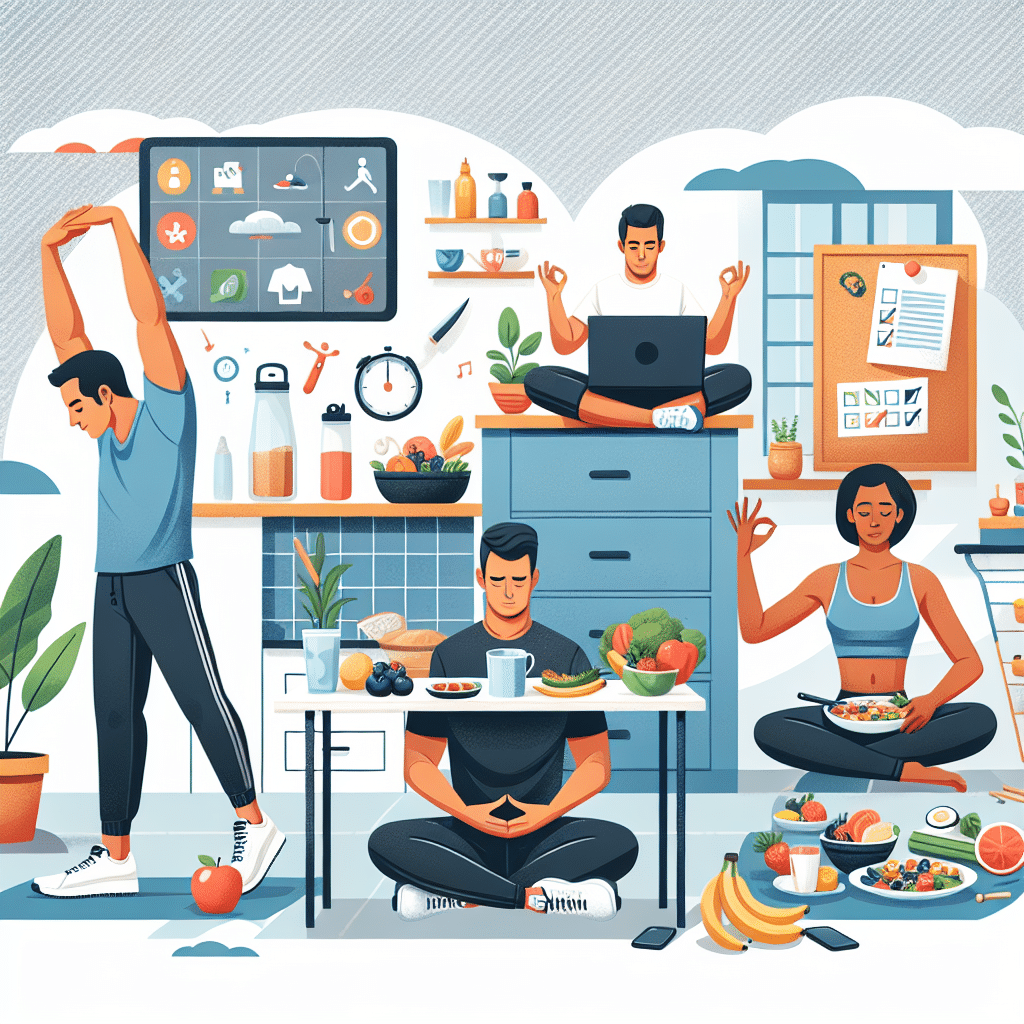1. Establish a Structured Morning Routine
Creating a consistent morning routine can significantly enhance productivity for remote employees. Start your day at a fixed time to regulate your body’s internal clock, ensuring optimal energy levels throughout the day. Incorporate activities that awaken both your mind and body. For example, consider the following steps:
- Hydration: Begin your routine by drinking a glass of water to jumpstart your metabolism and hydrate your body after a night’s sleep.
- Exercise: Engage in at least 20-30 minutes of physical activity, whether it’s a brisk walk, yoga, or strength-training exercises. Physical movement increases endorphin levels, enhancing mood and focus.
- Personal Care: Allocate time for daily hygiene, grooming, and dressing. Wearing professional attire—even if you’re working from home—can mentally prepare you for the tasks ahead.
2. Designate a Dedicated Workspace
Creating a specific area in your home for work can vastly improve concentration and decrease distractions. This space should be equipped with ergonomic furniture and proper lighting. Key considerations include:
- Ergonomics: Choose a comfortable chair and desk that promote proper posture, reducing the risk of strain and injury.
- Minimal Distractions: Keep your workspace tidy and limit distractions like personal electronics and unproductive family interactions during work hours.
- Organization: Utilize organizational tools such as filing cabinets or shelves to maintain a clutter-free environment, which can help improve focus.
3. Implement Time Management Strategies
Effective time management is essential for enhancing productivity. Techniques such as the Pomodoro Technique—working for 25 minutes followed by a 5-minute break—can maintain high levels of focus. Other strategies include:
- Task Prioritization: At the start of each day, create a to-do list categorizing tasks by priority. Use the Eisenhower Matrix to divide tasks into quadrants of urgency and importance.
- Time Blocking: Allocate specific blocks of time for particular tasks, ensuring that essential projects receive the attention they deserve without overextending yourself.
4. Maintain Regular Breaks
Incorporating regular breaks into your daily routine is crucial for sustaining mental acuity. Taking short breaks every hour allows your mind to refresh, helping to prevent burnout. Best practices for breaks include:
- Micro-breaks: Stand up, stretch, or take a stroll around your living space. These short intermissions help reduce physical tension and invigorate your mind.
- Mindfulness Minutes: Consider integrating mindfulness exercises or meditation during break times. Studies have shown that just a few minutes of mindfulness practice can greatly enhance emotional health and cognitive function.
5. Eat a Balanced Diet
Nutrition plays a pivotal role in maintaining energy and focus. Remote employees should prioritize a balanced diet consisting of a variety of food groups. Elements to consider:
- Meal Prep: Prepare meals in advance to ensure healthy options are readily available, reducing the temptation to reach for unhealthy snacks.
- Hydration: Keep a water bottle nearby and strive to drink at least 8 glasses of water daily. Caring for hydration supports bodily function, including cognitive processes.
- Quality Snacks: Opt for nutritious snacks such as fruits, nuts, or yogurt instead of processed foods high in sugars and empty calories.
6. Engage in Social Interaction
Isolation can be a challenge for remote employees. Building a network of connections is vital for emotional well-being. Ways to foster social interaction in a remote setup include:
- Regular Check-ins: Schedule virtual coffee breaks or casual check-ins with colleagues to engage in informal discussions.
- Team Building Activities: Participate in online games, quizzes, or informal team-building exercises to enhance camaraderie among team members.
- Social Platforms: Join professional communities or forums that align with your industry for networking and support.
7. Set Clear Boundaries Between Work and Leisure
Finding a balance between professional responsibilities and personal life is essential for mental health. Establishing boundaries can help manage this balance effectively. Consider the following advice:
- Work Hours: Clearly define when your workday begins and ends. Communicate these hours with colleagues to manage expectations.
- Digital Detox: After work hours, avoid checking emails or work-related messages to promote relaxation and personal time.
- Leisure Dial: Dedicate evening hours to hobbies or socializing, transitioning your mindset away from work.
8. Prioritize Mental Health
Mental well-being is crucial for productivity. Remote employees should actively seek methods to manage stress and enhance emotional health. Strategies to consider:
- Mindfulness and Meditation: Daily practices can help reduce stress and increase resilience to work pressures. Apps like Headspace or Calm can guide you through meditation.
- Exercise for Mental Health: Engage in physical activities that you enjoy, as exercise has been shown to release endorphins, which combat stress and elevate mood.
- Seek Professional Support: If feeling consistently overwhelmed, consider consulting a mental health professional, either in person or through teletherapy options.
9. Limit Screen Time Outside of Work
In a remote work environment, it’s easy to end up spending excessive time in front of screens, impacting eye health and overall well-being. Mitigate screen fatigue by following these tips:
- Scheduled Breaks for Eyes: Use the 20-20-20 rule: every 20 minutes, look at something 20 feet away for at least 20 seconds.
- Limit Blue Light Exposure: Install apps on devices that adjust screen brightness and reduce blue light, especially during evening hours.
10. Reflect on progress
Concluding the workday with a reflection session can be beneficial for personal and professional growth. Reflective practices might involve:
- Daily Journaling: Each evening, jot down accomplishments and areas of improvement to track your progress and set goals for the following day.
- Feedback Loops: Regularly ask for feedback from colleagues or supervisors to gain insights into areas for development, fostering a culture of continuous growth.
By incorporating these healthy daily routines, remote employees can create a balanced, productive work environment that promotes mental and physical well-being. These practices not only improve individual performance but also contribute to a thriving company culture in a remote setting.
